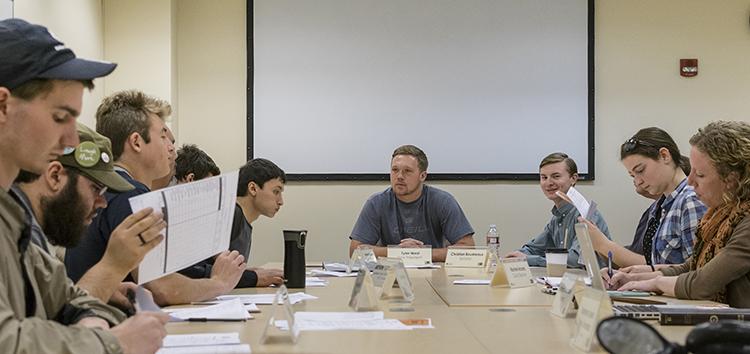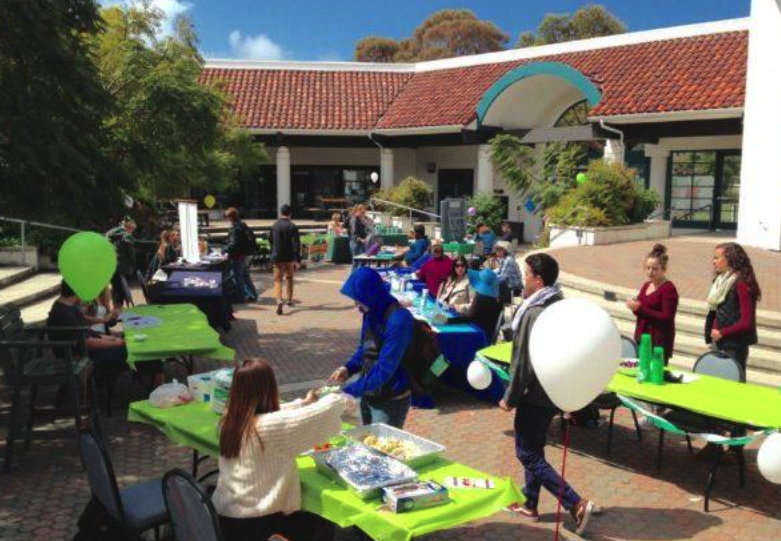By Chris Bremer
Copy Editor
Cuesta College will soon be voting online for the leaders of the student government, who have critical roles in determining how student fees are spent.
This year’s election is for the Associated Students of Cuesta College’s president and vice president, and is being held from April 17 to the 21.
The ballot also includes a proposal to remove a required student government course as a requirement for students interested in joining the ASCC.
“For some, [the course] just doesn’t work out with their class schedule,†said Tyler West, the ASCC vice president. “It doesn’t make it fair for them.â€
This is Cuesta students’ only chance to share how they want their student government to run – and ultimately spend their money – via student body election. Each semester, most students pay a $1 student representation fee that is used by the student government; however, students “may refuse to pay the fee for religious, political, financial or moral reasons,†Cuesta’s description of fees webpage states.
“Having more visibility should be the [ASCC’s] highest priority,†said Michael Constable, the current ASCC president. “We spend easily in the range of thousands. All the money we spend relates to improving the student government or the student experience.â€
When compared to other local community colleges, the ASCC’s low number of student body elected positions is unique – especially for a school with a population of over 10,000 students.
“If we had students that wanted to vote for every position, that’s what I’d want to do,†West said. “[…] It’s hard to go to a student wide vote when there’s such little student involvement.â€
Last year, only one position was voted on by Cuesta’s student body due to lack of applicants for the vice president role.
The ASCC plans to combat this through more advertisements and activities that promote awareness of this election, citing: flyers, posters, ASCC events and an online video promoting student involvement, according to West.
Cuesta’s student body elections are noticeably different than neighboring community colleges. Many appointed positions in the ASCC are voted on via student body election in other colleges.
Allan Hancock College’s students elect 14 positions with a student population of just under 10,000.
Santa Barbara City College’s 18,000 to 20,000 students are permitted to elect six position for their student government.
Ventura College has about 13,000 students, and elect eight positions for their student government via student body election.
“It’s important to remember that Cuesta is a commuter school, which makes it different than other colleges,†Constable said. “People come just for class.â€
Student involvement in determining how Cuesta’s student government is run extends to the vote for the president and vice president. Both positions hold significant responsibilities relating to the operation of the ASCC.
The president of the ASCC presides over senate meetings as chair, and acts as vice-chair for executive cabinet meetings.
When students vote for the president, they are also electing their student trustee. This means that the president is also the image of the student voice for Cuesta faculty, Constable said.
The Cuesta College student trustee is expected to attend all San Luis Obispo County Community College District Board of Trustee meetings. This means they are required to both live in the Cuesta College District and to be a registered voter in SLO County.
The vice president serves as both chair of ASCC executive cabinet meetings, and vice-chair of ASCC senate meetings. The position’s responsibilities also entail serving as the student representative on the College Council Committee, an advisory committee that communicates proposals and recommendations for Cuesta.
For Constable and West, increasing student awareness is the answer to gaining more student body involvement with the ASCC.
“We’re trying to better the student government,†Constable said. “It’s losing effectiveness and we want to better that with a sustainable solution.â€















